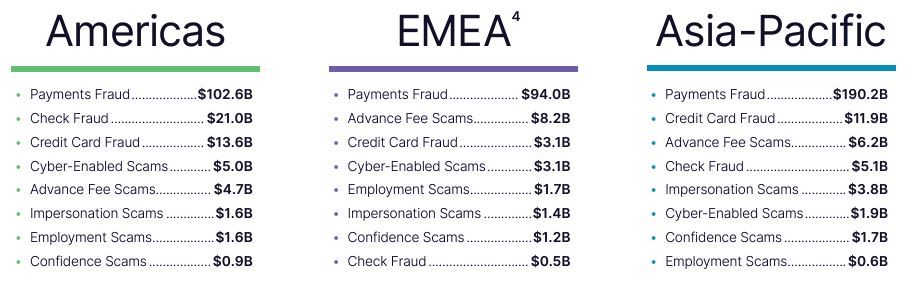The FED: Decrease in Check Volume Doesn’t Mean Decrease in Check Fraud
- A decrease in check usage has not meant less fraud
- Nevertheless, checks remain popular in the United States
- A corresponding jump in fraud -- some of it organized -- is occurring in the US
Jessica Washington, AAP, assistant vice president in the Retail Payments Risk Forum of the Federal Reserve Bank of Atlanta, notes in a post at their blog, Take On Payments, that check volume has been declining. However, check fraud is booming, with financial institutions reporting unprecedented losses due to soaring check fraud.
Even in 2024, US consumers and businesses have an appetite for check payments. Unfortunately, so do the fraudsters who prey on payment processing gaps.
Causes of the surge in check fraud include factors we've explored before: mail theft, images of checks sold on the dark web, and fake check ATM deposits.
Check Fraud from Around the World
It is important to put into context how the US compares to the rest of the world -- and it appears that check fraud is more prevalent in the US than EMEA and Asia-Pacific.
As reported in the NASDAQ Global Financial Crime Report:
$21B in Check Fraud Check fraud losses in the Americas represented nearly 80% of total check fraud losses globally last year, underscoring the growing problem of check fraud in the U.S.

As noted in the 2024 AFP Payments Fraud and Control Survey Report: "Checks continue to be the payment method most vulnerable to fraud, with 65% of respondents reporting their organizations faced fraud attacks of this type."
Compounding the problem, Security Magazine notes that 51% of victims report they are targetted multiple times.
The FED Rolling out Technology to Fight Fraud
In the article, Ms. Washington points out two tools from the FED to combat fraud: FedPayments Reporter for Check, which enables financial institutions and their customers to see check images before formal presentment to make timely returns to avoid financial loss. and the FedDetect Duplicate Treasury Check Notifier Service, which gives financial institutions early notice of potential duplicate Treasury checks even with sight of checks deposited at another institution.
However, each have their flaws. The FedPayments Reporter for check lacks the ability to compare the item with previous cleared items, which is crucial for reviewing images of checks for fraud AND the amount of time it will take to review all checks manually. The FedDetect Duplicate Treasury Check Notifier Service can identify duplicates, but if a fraudster alters a treasury check instead of duplicating it, the system will not be able to detect this.
However, Ms. Washington notes that artificial intelligence and machine learning tools are becoming more and more widely available. The FED announced their utilization of AI and ML, with positive results.
This allows financial institutions to use a combination of tactics to monitor changes and trends with feedback loops about checks moving through their systems. The Treasury just announced it recovered $375 million from check fraud utilizing AI tools.
While a small drop in the bucket, AI and machine learning technologies are indeed the right tools for the industry to fight check fraud. FIs are seeing great success leveraging AI- and ML-based systems for monitoring transactions and analyzing the images of checks -- with reported 95%+ detection rates. Combine these technologies with the systems provided by the FED and FIs can ensure a strong check fraud defense.